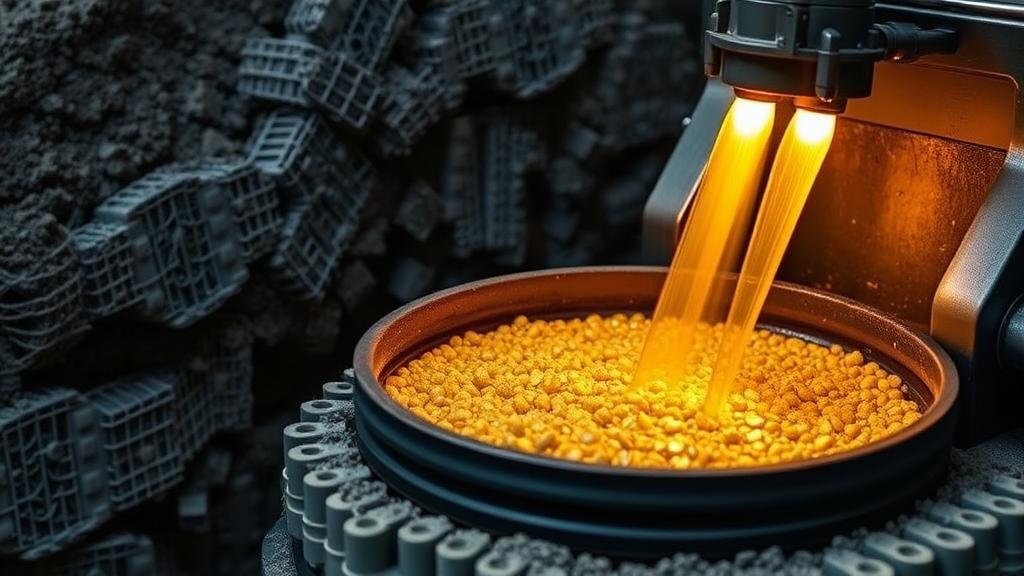The Role of Cyanide-Free Leaching in Modern Gold Recovery Operations
The Role of Cyanide-Free Leaching in Modern Gold Recovery Operations
Gold recovery operations have traditionally relied on cyanide-based methods due to their efficiency in extracting gold from ore. But, growing environmental concerns and regulatory scrutiny have prompted the mining industry to seek alternative methods. Cyanide-free leaching technologies are becoming more prominent, offering a sustainable approach to gold recovery without the toxic implications associated with cyanide. This article will explore the mechanisms, advantages, and case studies regarding cyanide-free leaching in modern gold recovery.
Cyanide-Free Leaching Technologies
Cyanide-free leaching primarily encompasses several alternative processes designed to avoid the environmental damage linked to cyanide usage. The most notable methods include:
- Thiosulfate Leaching: This process uses thiosulfate ions to extract gold from ore. It is particularly effective in treating certain low-grade and complex ores.
- Chlorination: Chlorine gas dissolves gold from ores in a solution, offering an alternative to cyanide that can be effective in various ore types.
- Biotechnological Methods: Utilizing microorganisms to extract gold can provide eco-friendly benefits while ensuring effective recovery.
Advantages of Cyanide-Free Leaching
Adopting cyanide-free leaching methods in gold recovery presents several advantages:
- Reduced Environmental Impact: Cyanide is highly toxic to aquatic life and poses serious health risks. Cyanide-free methods are significantly less hazardous, minimizing water pollution and ecological damage.
- Regulatory Compliance: Many governments are implementing stricter regulations on cyanide use in mining. Cyanide-free alternatives allow companies to meet these increasing regulatory requirements.
- Broader Ore Processing Options: Certain cyanide-free leaching methods, such as thiosulfate leaching, can treat ores that are not amenable to cyanidation, expanding the range of recoverable resources.
Real-World Applications
Several mining companies have successfully integrated cyanide-free leaching technologies into their operations:
- Newmont Corporation: Newmont has conducted extensive research on thiosulfate leaching and has successfully implemented this technology at the Éléonore mine in Canada, achieving gold recovery rates comparable to traditional methods while eliminating cyanide usage.
- Australian Gold Reprocessing Projects: Various projects across Australia have trialed chlorination and biotechnological methods, resulting in effective recovery with significantly lower environmental risks, particularly in areas with sensitive ecosystems.
Challenges and Considerations
While the transition to cyanide-free leaching methods offers numerous benefits, several challenges remain:
- Cost Factors: Initial investments in new technologies can be high, requiring careful cost-benefit analyses to justify the switch from conventional methods.
- Technical Limitations: Not all cyanide-free leaching methods are universally applicable. Their effectiveness can depend on the specific characteristics of the ore being processed.
Future Prospects
As the mining industry continues to evolve, it is likely that cyanide-free leaching technologies will gain traction. Continuous research and development efforts are focusing on enhancing the efficiency and scalability of these alternative methods, making them increasingly viable for widespread use.
For example, advancements in biotechnology may lead to more efficient microbial methods for gold extraction, while improved formulations of thiosulfate and chlorination processes could enable higher gold recovery rates.
Conclusion
The shift towards cyanide-free leaching in modern gold recovery operations is not just a response to regulatory pressures; it is also a step towards sustainable mining practices. By minimizing environmental risks and expanding the types of recoverable ores, these alternative methods present a compelling case for the future of gold extraction.
Mining companies should actively evaluate the potential of cyanide-free leaching technologies and consider them as long-term strategies for both operational success and environmental stewardship.



